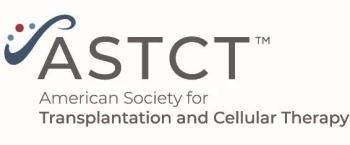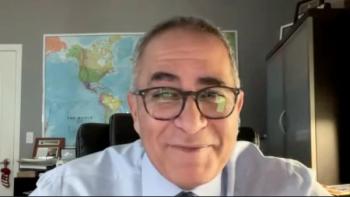
Survival Benefit in Myeloma With Lenalidomide Maintenance After Transplant
Patients with newly diagnosed multiple myeloma treated with lenalidomide maintenance therapy after undergoing autologous stem-cell transplantation had significantly improved overall survival compared with observation or placebo.
Patients with newly diagnosed multiple myeloma treated with lenalidomide maintenance therapy after undergoing autologous stem-cell transplantation (ASCT) had significantly improved overall survival compared with observation or placebo, according to the results of a meta-analysis
Data for the analysis were taken from three clinical trials-Cancer and Leukemia Group B 100104, Gruppo Italiano Malattie Ematologiche dell’Adulto RV-MM-PI-209, and Intergroupe Francophone du Myelome 2005-02-all of which showed a progression-free survival benefit with maintenance lenalidomide. However, none of the trials were powered to detect a difference in overall survival.
“This study demonstrates a statistically significant and clinically meaningful improvement in overall survival with lenalidomide maintenance,” wrote Philip L. McCarthy, MD, Roswell Park Cancer Institute in Buffalo, New York, and colleagues. “With new, highly active, triplet induction regimens enhancing depth and duration of response as well as ongoing studies evaluating the optimal timing of ASCT, the use of lenalidomide maintenance for transplantation-eligible patients can be considered a standard of care.”
The meta-analysis included patient-level data from the three randomized clinical trials on 1,208 patients (605 treated with maintenance therapy). Median progression-free survival was twice as long in patients assigned to lenalidomide maintenance compared with observation or placebo (52.8 months vs 23.5 months; hazard ratio [HR], 0.48; 95% CI, 0.41–0.55). The improvement in progression-free survival was consistent in all three studies.
At a median follow-up of 79.5 months, 64% of patients assigned lenalidomide and 54% of patients assigned to placebo or observation were alive. The median overall survival had not yet been reached for patients assigned to lenalidomide therapy compared with 86 months for placebo or observation (HR, 0.75; 95% CI, 0.63–0.90; P = .001).
“The heterogeneity analysis demonstrated that all three studies contributed to the positive results of the meta-analysis,” the researchers noted. “The HRs for each study are consistent with an overall survival improvement with lenalidomide maintenance vs placebo or observation.”
Patients assigned to lenalidomide had a higher cumulative incidence rate of second primary malignancy prior to disease progression compared with placebo or observation; however, they had a lower cumulative incidence rate of progression, death, or death as a result of myeloma. In addition, patients assigned lenalidomide had significantly longer time to progressive disease or second-line therapy compared with placebo or observation (HR, 0.51; 95% CI, 0.45–0.59; P < .001).
“The costs of maintenance therapy should be weighed against the costs of shorter survival, earlier progression, and earlier use of subsequent lines of therapies for patients without maintenance,” the researchers wrote. “Understanding the role of minimal residual disease detection and immune reconstitution after ASCT, as well as developing early endpoints as surrogates for long-term outcomes, should allow us to develop clinical strategies to further improve overall survival.”
Newsletter
Stay up to date on recent advances in the multidisciplinary approach to cancer.
















































































